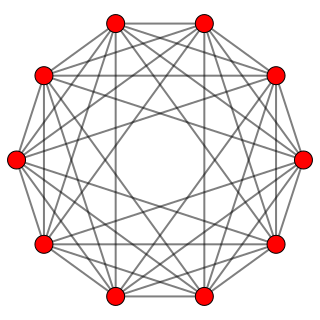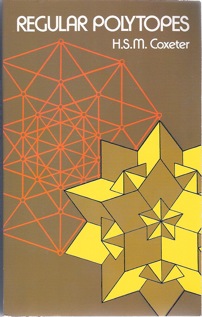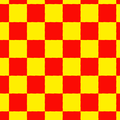 An alternated square tiling or checkerboard pattern. |  An expanded square tiling. |
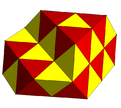 A partially filled alternated cubic honeycomb with tetrahedral and octahedral cells. | 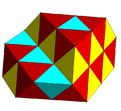 A subsymmetry colored alternated cubic honeycomb. |
In geometry, the alternated hypercube honeycomb (or demicubic honeycomb) is a dimensional infinite series of honeycombs, based on the hypercube honeycomb with an alternation operation. It is given a Schläfli symbol h{4,3...3,4} representing the regular form with half the vertices removed and containing the symmetry of Coxeter group for n ≥ 4. A lower symmetry form can be created by removing another mirror on an order-4 peak. [1]

Geometry is a branch of mathematics concerned with questions of shape, size, relative position of figures, and the properties of space. A mathematician who works in the field of geometry is called a geometer.

In geometry, a honeycomb is a space filling or close packing of polyhedral or higher-dimensional cells, so that there are no gaps. It is an example of the more general mathematical tiling or tessellation in any number of dimensions. Its dimension can be clarified as n-honeycomb for a honeycomb of n-dimensional space.

In geometry, an alternation or partial truncation, is an operation on a polygon, polyhedron, tiling, or higher dimensional polytope that removes alternate vertices.
The alternated hypercube facets become demihypercubes, and the deleted vertices create new orthoplex facets. The vertex figure for honeycombs of this family are rectified orthoplexes.

In geometry, demihypercubes are a class of n-polytopes constructed from alternation of an n-hypercube, labeled as hγn for being half of the hypercube family, γn. Half of the vertices are deleted and new facets are formed. The 2n facets become 2n(n-1)-demicubes, and 2n(n-1)-simplex facets are formed in place of the deleted vertices.

In geometry, a vertex figure, broadly speaking, is the figure exposed when a corner of a polyhedron or polytope is sliced off.
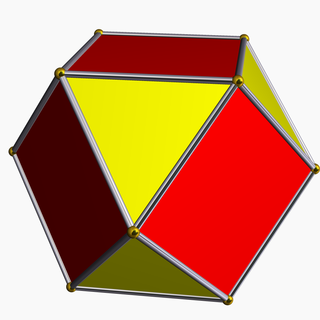
In Euclidean geometry, rectification or complete-truncation is the process of truncating a polytope by marking the midpoints of all its edges, and cutting off its vertices at those points. The resulting polytope will be bounded by vertex figure facets and the rectified facets of the original polytope.
These are also named as hδn for an (n-1)-dimensional honeycomb.
| hδn | Name | Schläfli symbol | Symmetry family | ||
|---|---|---|---|---|---|
[4,3n-4,31,1] | [31,1,3n-5,31,1] | ||||
| Coxeter-Dynkin diagrams by family | |||||
| hδ2 | Apeirogon | {∞} | |||
| hδ3 | Alternated square tiling (Same as {4,4}) | h{4,4}=t1{4,4} t0,2{4,4} | |||
| hδ4 | Alternated cubic honeycomb | h{4,3,4} {31,1,4} | |||
| hδ5 | 16-cell tetracomb (Same as {3,3,4,3}) | h{4,32,4} {31,1,3,4} {31,1,1,1} | |||
| hδ6 | 5-demicube honeycomb | h{4,33,4} {31,1,32,4} {31,1,3,31,1} | |||
| hδ7 | 6-demicube honeycomb | h{4,34,4} {31,1,33,4} {31,1,32,31,1} | |||
| hδ8 | 7-demicube honeycomb | h{4,35,4} {31,1,34,4} {31,1,33,31,1} | |||
| hδ9 | 8-demicube honeycomb | h{4,36,4} {31,1,35,4} {31,1,34,31,1} | |||
| hδn | n-demicubic honeycomb | h{4,3n-3,4} {31,1,3n-4,4} {31,1,3n-5,31,1} | ... | ||






